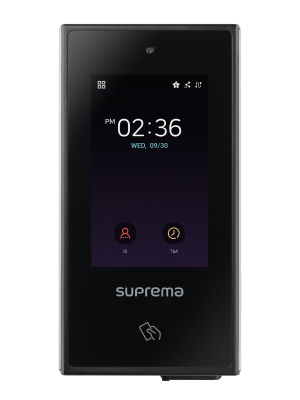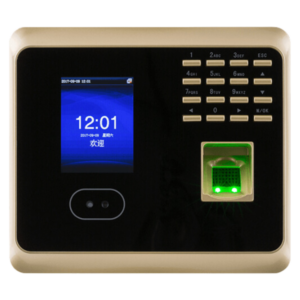
RFID Proximity Readers
Cost-Effective Reliability
The enduring popularity of proximity readers is due to their consistent reliability, ease of use and acceptance by any workforce wary of biometric technology. For businesses that do not experience problems with buddy clocking, proximity card readers remain an excellent choice.
Each employee is supplied with a unique proximity key fob or credit card-sized proximity card that they present to the terminal or reader. Proximity-based technology is a cost-effective solution, particularly for access control systems where large numbers of door locks or turnstiles require operation.
Proximity Readers from Egress Systems
All our terminals incorporate a proximity (RFID) reader that can read proximity cards and keyfobs. This offers distinct reliability advantages over magnetic stripe and barcode readers because proximity is a contactless technology meaning there is no wear on the cards or on the reader.
The Suprema X-Station 2 and XPass-2 are both dustproof and waterproof and capable of operating in a broad range of temperatures. The XPass-2 is also designed to withstand high levels of impact and boasts an IK08 protection rating making it perfect for exterior locations.
With many years of experience in the time and attendance sector, our experts can guide you through the process of selecting your first system or updating your current one. All of our solutions use best in class terminals and software to ensure your chosen solution fully meets your companies needs.
We also offer a full range of support services giving you peace of mind that a specialist is only a phone call away should you need them.
Key Benefits
Multiple card reader options
Keypad options to record breaks and job codes
Automate fire muster reporting
Quick contactless clocking
TCP/IP network connectivity
Interior & exterior installation options
UI and user-friendly operation interface
Suitable for access control and time and attendance applications
Why Choose a Proximity Terminal
Proximity terminals play a crucial role in modern access control systems, offering a range of benefits that enhance security, convenience, and efficiency. Below are the specific advantages provided by these systems:
Enhanced Security
Non-Contact Authentication: Proximity terminals allow for non-contact authentication, which is more secure than traditional lock-and-key systems. The credentials cannot be easily duplicated, and there’s no wear and tear on the system from physical contact.
Difficult to Tamper With: The lack of physical contact points reduces the risk of tampering. Since the system is electronic, it can also alert security personnel to any unauthorised access attempts.
Encryption and Secure Communication: Proximity cards and readers often use encryption, which makes it difficult for unauthorised individuals to intercept and replicate access credentials.
Ease of Use and Convenience
Quick Access: Users can gain access quickly by presenting their proximity card near the reader. This is convenient and saves time, especially at high-traffic entrances.
Hands-Free Options: Some proximity systems offer hands-free operation, which is particularly beneficial for individuals carrying items or those with disabilities.
Flexibility and Scalability
Easy to Program: Proximity cards can be easily programmed, reprogrammed, or deactivated by the security system administrators, allowing for flexible control over who has access to specific areas.
Scalable Systems: As an organisation grows, the proximity access control system can be scaled to accommodate more users and additional access points without significant infrastructure changes.
Record Keeping and Integration
Audit Trails: Proximity systems keep a record of every entry and exit, providing an audit trail that can be valuable for security reviews and investigations.
Integration with Other Systems: Proximity access control can be integrated with other security systems, such as alarms and time and attendance systems, providing a comprehensive security solution.
Cost-Effectiveness
Low Maintenance: Proximity readers generally require less maintenance than magnetic stripe or barcode readers because they have no direct contact with the card.
Durability: Proximity cards are typically more durable than magnetic stripe cards as they do not need to be swiped and are less susceptible to damage from external elements.


